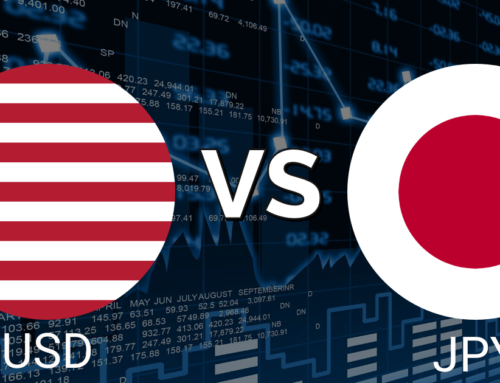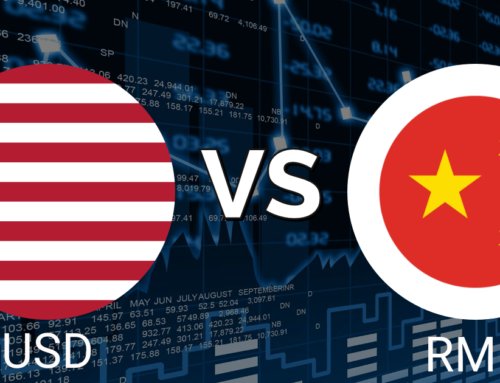
Since 1975, the Ringgit, also known as the Malaysian Dollar, has been Malaysia’s official currency. The Malay word ringgit comes from a term for “jagged” that was used to describe the serrated edges of Spanish dollars (which were formerly in use to prevent robbers from shaving off little portions of precious metal to make new coins). The currency symbol is RM, and the currency code is MYR. The Ringgit can be divided into 100 sen (cents), which are represented by the numeral “100.”
Ringgit History
The history of the Malaysian ringgit begins on August 31, 1957, when Malaysia was formed through the independence of Malaya. The Bank Negara Malaysia was established on January 26, 1959, and has the power to issue Malaysia currency under Bank Negara Tanah Melayu Ordinance 1958.
The Board of Commissioners of Currency Malaya and British Borneo, on the other hand, continued to print money until 12 June 1967, when the 1st Malaysia currency series was put out by Bank Negara.
When Malaysia were formed on September 16, 1963, Bank Negara Tanah Melayu was renamed to Bank Negara Malaysia (Central Bank of Malaysia). The old Malaya currency and the first Malaysian currency circulated together until January 16, 1969, when the old Malaya currency was rendered no longer legal tender.
The Name of Ringgit
In August 1975, the Malay names ringgit and sen were designated as the country’s sole official names. Previously, they had been known as dollars and cents in English and ringgit and sen in Malay; however, this usage still persists in certain places.
In Malaysia, a ringgit is referred to as “one dollar” in English and “tsit8-kho-1” (蜀块) in Hokkien. In Peninsular Malaysia’s northern states, 10-cent coins are known as kupang (Malay “poat8”) in Peninsular Malay, such as 50 sen is 5 kupang.
Until the 1990s, the dollar sign “$” (or “M$”) was not changed to “RM” (Ringgit Malaysia) internationally (MY being the country code for Malaysia).
First Series Banknotes
The first paper money of Malaysia was issued in June 1967, with $1, $5, $10, $50, and $100 denominations. The $1000 note was introduced for the first time on September 2nd 1968.
The reverse of Malaysian banknotes has always featured the portrait of Tuanku Abdul Rahman, the country’s first Yang di-Pertuan Agong. The Bank Negara Malaysia logo is shown on the reverse with a geometric pattern in the background.
The banknotes all feature a watermark of a tiger. Following the new Malay spelling system, BNM revised the spelling system in August 1972. For example, “SE-PULUH” was changed to “SA-PULOH.” When the bills were viewed at an angle, a latent image of the numerical number emerged in 1976, and a new security feature was added to the new notes.
Second Series Banknotes
In 1982, BNM issued second series banknotes to the public with a design that highlighted Malaysian culture, architecture, and monuments. The $1, $5, $10, $20, $50, $100, $500 and £1000 denominations were part of this series.
The banknotes’ obverse image of the first DYMM Yang Di-pertuan Agong has been preserved. The tiger watermark was updated to feature the first DYMM Yang Di-pertuan Agong portrait. In 1995, 20 ringgit banknotes were discontinued and rendered useless as legal tender.
Third Series Banknotes
The Malaysian 3rd series banknotes were introduced stage by stage with the “Wawasan 2020” slogan, which reflects Malaysia’s economic development and success. To reflect Malaysia’s Modern economy, various designs were used.
Fourth Series Banknotes
The newly designed banknotes for Malaysia, which are part of the 4th series and have been issued by Prime Minister YAB Dato’ Sri Mohd Najib Tun Haji Abdul Razak at Sasana Kijang on December 28, 2011, contain $1, $5, $10, $20, $50, and $100.
The newest line of Malaysian banknotes is based on features that best represent the country’s unique culture, heritage, and environment. The fourth series of Malaysian banknotes, which is dubbed ‘Distinctively Malaysia,’ includes traditional sentiments in the arts and crafts, natural wonders, flora and fauna, economy and culture.
Asian Financial Crisis
There was a large influx of ringgit taken out of the country after the AFC breached Malaysia in 1997, with many people converting their savings to cash. As a result, the RM500 and RM1000 notes were discontinued in 1999, becoming an unlawful currency.
In the aftermath of the financial crisis, the Central Bank implemented a monetary policy to protect currency value and used the “dirt float” approach in order to minimize fluctuations.
The exchange rate was sustained until July 1997, when BNM surrendered maintaining the rate in response to the Asian Crisis. Since September 2, 1998, the ringgit has been linked to the US dollar at US$1.00 = RM3.8010 in order to maintain stability of the Ringgit currency.
USD News
- GBP/USD chalks in another down week despite late Sterling uptick - FXStreeton July 26, 2024 at 9:05 pm
GBP/USD chalks in another down week despite late Sterling uptick FXStreet
- Global RT-PCR Test Kits Market Size To Exceed USD 7.12 Billion by 2033 | CAGR Of 5.99% - GlobeNewswireon July 26, 2024 at 8:02 pm
Global RT-PCR Test Kits Market Size To Exceed USD 7.12 Billion by 2033 | CAGR Of 5.99% GlobeNewswire
- USD/JPY Price Analysis: Bears overtake bulls as pair remains below 154.00 - FXStreeton July 26, 2024 at 7:49 pm
USD/JPY Price Analysis: Bears overtake bulls as pair remains below 154.00 FXStreet
- USD/CHF gains momentum as bears take a breather, pair inch towards 0.8830 - FXStreeton July 26, 2024 at 7:43 pm
USD/CHF gains momentum as bears take a breather, pair inch towards 0.8830 FXStreet
- Global Space Tourism Market Size To Exceed USD 35108.7 Million By 2033 | CAGR Of 44.55% - GlobeNewswireon July 26, 2024 at 7:02 pm
Global Space Tourism Market Size To Exceed USD 35108.7 Million By 2033 | CAGR Of 44.55% GlobeNewswire
RM News
- Ringgit Set To Gain Next Week On US Rate Cut Hopes - BusinessTodayon July 27, 2024 at 3:03 am
Ringgit Set To Gain Next Week On US Rate Cut Hopes BusinessToday
- Ringgit set to extend gains next week on expected us interest rate cut - The Malaysian Reserveon July 27, 2024 at 2:32 am
Ringgit set to extend gains next week on expected us interest rate cut The Malaysian Reserve
- Malaysia's median monthly wages up 9.4 per cent to 610 USD in March - Daijiworld.comon July 26, 2024 at 3:10 pm
Malaysia's median monthly wages up 9.4 per cent to 610 USD in March Daijiworld.com
- Ringgit revisits 4.65 level vs US dollar - The Star Onlineon July 26, 2024 at 11:20 am
Ringgit revisits 4.65 level vs US dollar The Star Online
- Foreign Exchange Rates July 26, 2024 - BusinessTodayon July 26, 2024 at 9:16 am
Foreign Exchange Rates July 26, 2024 BusinessToday


